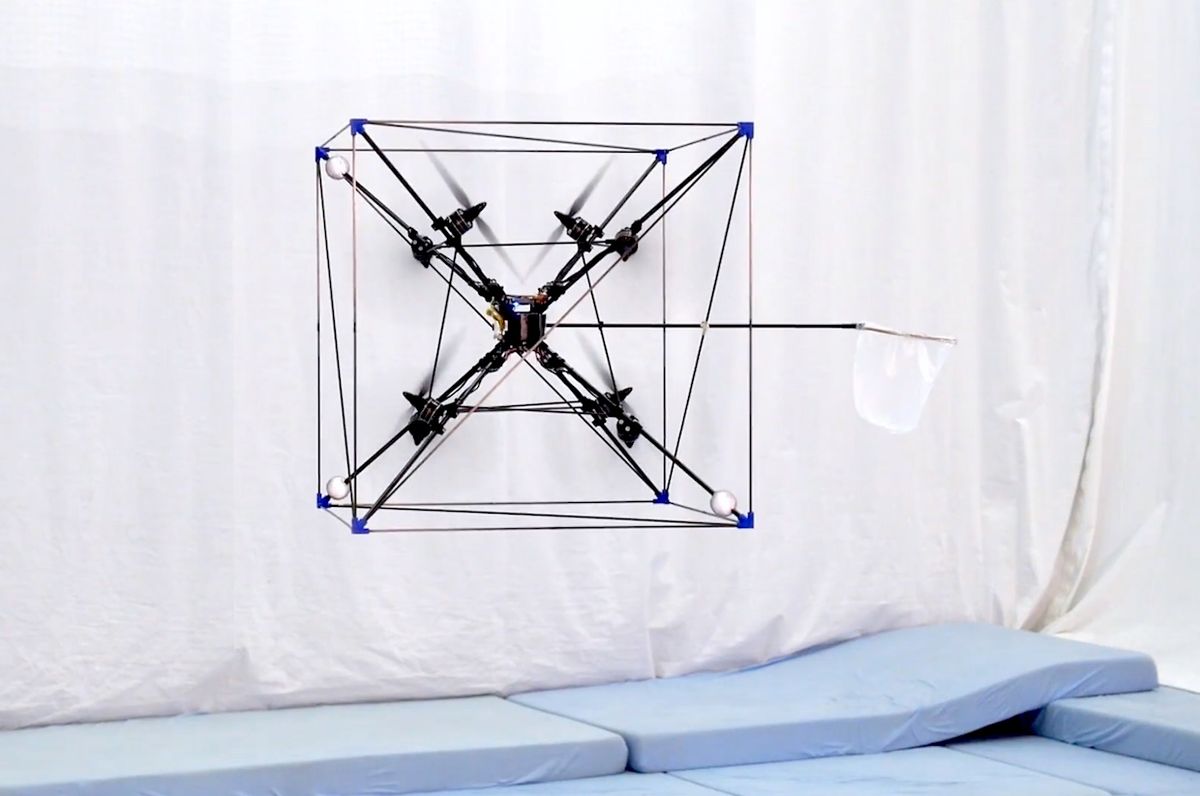Most aircraft are designed to be very good at going upward, and also not bad at going forward, with some relatively small amount of thought given to turning left and right. Thanks to gravity, downward is usually taken care of. Even aircraft designed to hover, like helicopters and quadrotors, have preferential directions of orientation and travel where their particular arrangement of motors and control surfaces makes them most effective.
ETH Zurich’s Omnicopter goes about flying in a totally different way. With eight motors oriented in all directions, the Omnicopter doesn’t have an up or down or front or back: It can translate and rotate in any direction, letting it play a very skilled game of fetch.
We have developed a computationally efficient trajectory generator for six degrees-of-freedom multirotor vehicles, i.e. vehicles that can independently control their position and attitude. The trajectory generator is capable of generating approximately 500,000 trajectories per second that guide the multirotor vehicle from any initial state, i.e. position, velocity and attitude, to any desired final state in a given time. In this video, we show an example application that requires the evaluation of a large number of trajectories in real time.
There are two particularly cool things about this video, I think. The first is how the Omnicopter is able to keep the net stationary while making the catch, even if the rest of its body is still in motion. This is only possible with the Omnicopter, because of how translation and rotation are decoupled from each other: A quadrotor configuration can’t do it, because it has to rotate itself in order to control translation (it tilts to move sideways, in other words).
The second cool thing is at the very end, where the Omnicopter returns the ball by rotating in place so that the ball drops out of the net. That kind of performance makes me wonder whether Omnicopter-like designs are the future of aerial manipulation, as opposed to what we’re used to seeing, which are multi-DoF arms stapled to helicopters or quadrotors.
The latter approach essentially uses the UAV to provide an (inevitably shaky) midair platform from which an arm can operate, making for a very complex and not particularly stable system that can have issues with accuracy and torque. With an Omnicopter, on the other hand, it seems like you could just stick a gripper onto an arbitrary face of it, and then have the entire robot serve as an actuator. It might not be able to do everything a multi-DoF arm can do, but I bet it would be a lot easier to manage—at least when you’re able to externally localize with a motion-capture system like in the fetching video (not that that’s cheating or anything).
The fetching work comes from Dario Brescianini and Raffaello D’Andrea at the Institute for Dynamic Systems and Control (IDSC), ETH Zurich, Switzerland. It doesn’t look like there’s a specific paper yet, but for more on the Omnicopter, you can read this paper from ICRA 2016.
[ ETH FMA ]
Thanks Markus!
Evan Ackerman is a senior editor at IEEE Spectrum. Since 2007, he has written over 6,000 articles on robotics and technology. He has a degree in Martian geology and is excellent at playing bagpipes.



